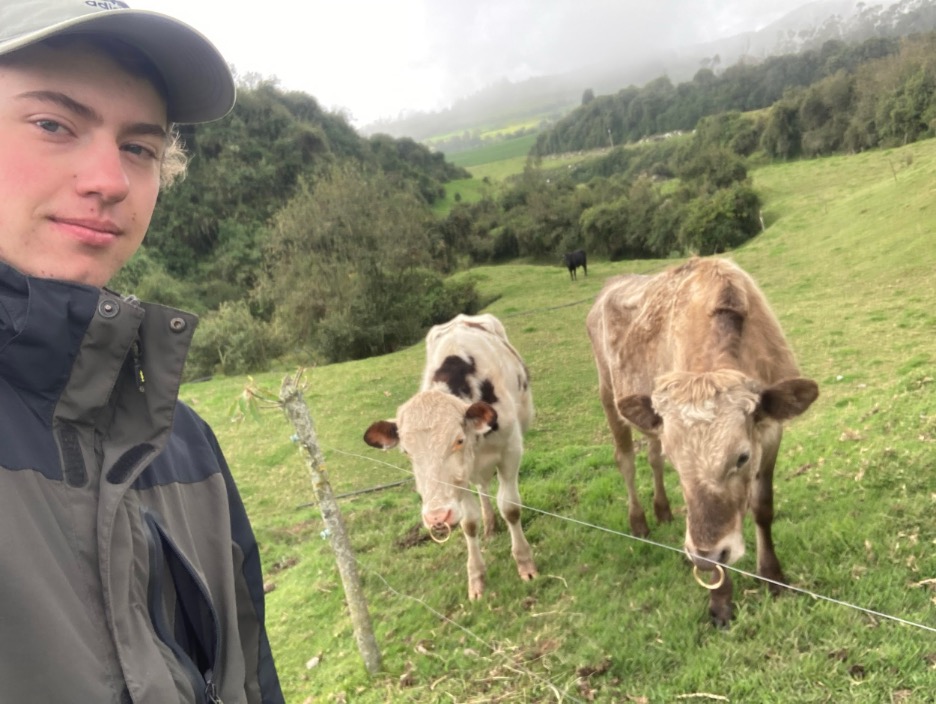Leaving Quito to serve in Cotacachi
Students have been on Service for weeks now. This experience allows them to learn, reflect, and live among Ecuadorians in closer relations. Many SSTers want to express how their activities help them grow and become global citizens. Here is a an example of this written by Emily.
Before I left Quito, I took a picture of the inside and outside of my host family’s house so I could show my family at home where I was living and remember what it was like. Our house was on the ground floor of a two-story building tucked behind a brick wall and had a small patch of dirt for a garden with a few flowering shrubs lining the wall across from the wide living room window. It was a small and dark house but comfortable and warm. Every morning my host mom would leave my breakfast on the table for me, and I remember sitting there for my meals, feeling very well cared for and wishing I had more power to help around the house while also trying to acknowledge and gratefully accept the hospitality I was receiving. In Quito, it wasn’t always easy to see the landscape, and most of it was covered in houses, but in Cotacachi, where I have been placed for service, there are plenty of opportunities to see the breathtaking and living mountainsides covered in patches of fields.

For many Cotacacheños, nature and the nearby mountains Taita Imbabura and Mama Cotacachi are considered to be an irreplaceable treasure and are a part of the indigenous community’s cultural heritage. Our service organization, Jóvenes por la Paz, is involved in a festival near the end of July in which artists are invited to paint murals around the center of the city to attract tourists and express the arts for the benefit of all. Many of the existing murals in the city feature depictions of indigenous Ecuadorian clothing and instruments, animals, plants providing food, and pleas to protect nature.

Much of our service work has consisted of weeding in the garden behind my house and traveling to various locations around the red de senderos ecológicos, a network of hiking and biking trails that our eclectic service leader hopes to create from historic trading paths, farm roads, and various other rights of way to promote outdoor recreation, tourism, and community connection. Part of the vision for these trails is to line them with fruit and shade trees, creating a food source as well as a recreation spot, and part of our work has been planting young trees and weeding around trees planted by previous SSTers. Locations we have visited and camped in have included an amazing hobby farm property full of mature fruit trees, a farm with a large mountaintop field of beans located on the site of numerous ancient pyramids, a natural rock formation known as the face of Intag, and a large dairy ranch called la Hacienda de la Joya.


We found this human jawbone while working in my family’s backyard garden. The result of living in a place with centuries of history, this jawbone was probably part of a past burial on this property and was most likely unearthed by our dog.


At the tolas of Gualiman, a large farm located on the site of several ancient earthen flat topped pyramids and many burial mounds called tolas, we were hospitably treated to a tractor ride up an extremely steep road to the main pyramid and farmhouse, which also doubled as a restaurant. Yikes! The Ecuadorians pictured here are Auki Tituaña and Fernando Cerpa, members of our host families, as well as Hernando Pereira, farmer at the property, who showed us around the largest pyramid and a small museum of clay artifacts from the site.

Getting to know the people and the natural environment a little bit better in Cotacachi has been both amazing and challenging. In comparison to my experiences of local government and nonprofit organizations in the US, it surprises me how much the environment is part of people’s thoughts about the future of Cotacachi, both because of its cultural significance and importance to local economic activities of agriculture and tourism. Through our service organization, I am also learning more about the courage it takes to believe in the community’s capacity to grow and change and incorporate exciting new ideas for recreation, celebration, and connection, even if those ideas start in the mind of just one person. Through all of this, I continue to be amazed by the dynamism and kindness of our host family, their wealth of knowledge, and decades of experience serving their community.





